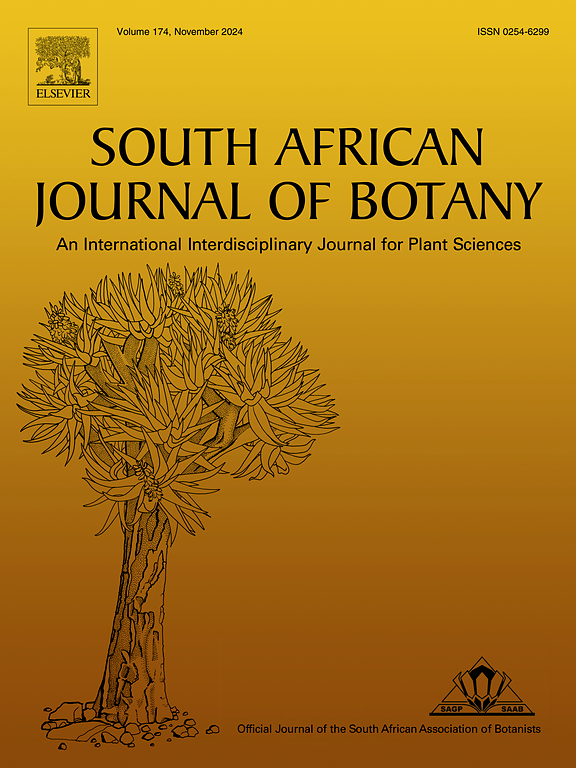Transcriptional profiling and proteomic validation revealed higher boron tolerance in Arabidopsis thaliana exposed to salt pre-treatment
IF 2.7
3区 生物学
Q2 PLANT SCIENCES
引用次数: 0
Abstract
Boron (B), which has a very narrow range of deficiency and toxicity, is an essential and unique micronutrient for plants. The negative effects of B toxicity in plants have been recently alleviated by various treatments such as salt, melatonin, nitrit oxide etc. This study aimed to evaluate the alleviating effect of salt pre-treatment (SP) on boron stress by investigating B accumulation, photosynthetic activity, oxidative damage, and antioxidant defense system and the changes in transcriptomic responses and proteomic validation in Arabidopsis thaliana. Twelve-day-old A. thaliana plants grown under control conditions were transferred to plates including 40 mM NaCl for 3 days and, then, the seedlings with/without SP were transferred to plates containing 3 mM H3BO3 (3B) and 5 mM H3BO3 (5B) for 7 days. B toxicity led to a decrease in leaf area, biomass, the photosynthetic performance and the content of photosynthetic pigments and an increase in the accumulation of B, the contents of anthocyanin, while SP treatments mitigated the adverse effects of B toxicity on these parameters in Arabidopsis thaliana. According to RNA-seq analysis, the number of differentially expressed genes (DEGs) was higher in 5B than in 3B treatment in leaf tissues. Also, SP treatments induced more genes than 3B and 5B treatments and it was higher in SP-5B than in SP-3B treatment. These genes related to mainly the metabolic pathways, biosynthesis of secondary metabolites, ribosome, plant-pathogen interaction, plant hormone signal transduction, carbon metabolism, biosynthesis of amino acids, photosynthesis, and ribosome biogenesis. Especially, the genes of ribosome biogenesis were induced under all conditions and in fact, it was determined that they were induced more following SP treatments compared to 3B and 5B. In conclusion, SP treatments can reduce the detrimental effect of B toxicity on Arabidopsis thaliana by inducing more internal B defense and detoxification mechanism, and the genes of some metabolic pathways.
求助全文
约1分钟内获得全文
求助全文
来源期刊

South African Journal of Botany
生物-植物科学
CiteScore
5.20
自引率
9.70%
发文量
709
审稿时长
61 days
期刊介绍:
The South African Journal of Botany publishes original papers that deal with the classification, biodiversity, morphology, physiology, molecular biology, ecology, biotechnology, ethnobotany and other botanically related aspects of species that are of importance to southern Africa. Manuscripts dealing with significant new findings on other species of the world and general botanical principles will also be considered and are encouraged.
 求助内容:
求助内容: 应助结果提醒方式:
应助结果提醒方式:


